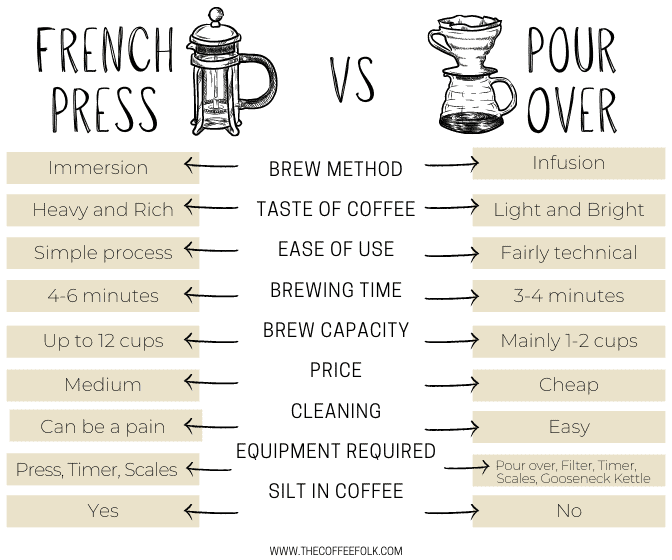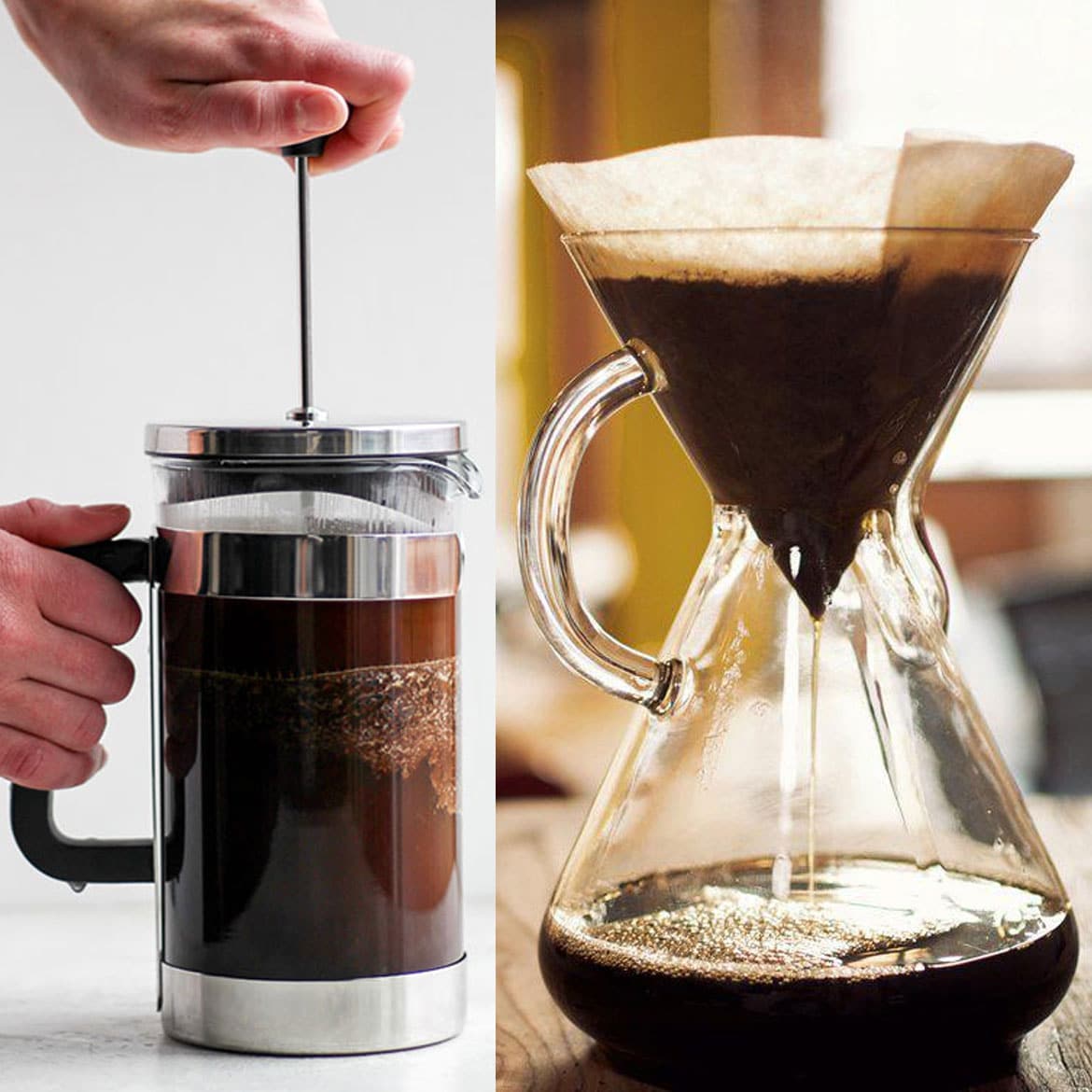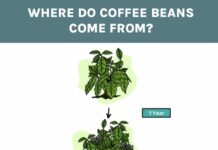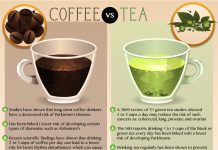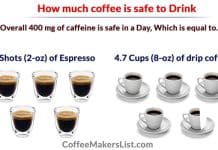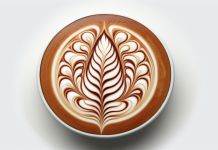Coffee enthusiasts are often presented with countless brewing methods, each promising to elevate their morning cup of joe to new heights.
In this article, we will explore the distinction between two popular brewing techniques: the French press and the pour over.
Both methods offer unique characteristics that result in distinct flavors and aromas, and understanding these differences will empower coffee lovers to make an informed choice regarding their preferred brewing method.
So grab your mug and join us on a flavorful journey as we compare the French press and the pour over, showcasing the nuances that set them apart and ultimately contribute to a delightful coffee experience.
Brewing Methods
When it comes to brewing coffee, there are countless methods to choose from. The French press and the pour over are two popular options among coffee enthusiasts. Both methods offer unique characteristics that can significantly impact the flavor and brewing experience.
This article will explore the differences between these two brewing methods, discussing everything from equipment needed to brewing temperature and coffee flavor. So, to elevate your coffee game, keep reading to discover which brewing method is perfect for you.
French Press
Equipment Needed
You will need a few critical pieces of equipment to brew coffee using a French press. The most important item is, of course, the French press itself. This device comprises a glass or stainless steel container with a plunger and a mesh filter.
Additionally, you will need a kettle to heat the water, a grinder to grind your coffee beans, and a coffee scale to measure the coffee and water ratios accurately. Once you have these items, you can begin brewing delicious coffee with a French press.
Grind Size
When using a French press, a coarse grind size is ideal. This allows for better extraction and prevents over-extraction, resulting in a strong and full-bodied cup of coffee.
The coarse grind also helps to minimize the amount of sediment that ends up in your brewed coffee. Using a burr grinder to achieve a consistent coarse grind size is recommended for the best French press brewing experience.
Brew Time
One of the significant advantages of brewing coffee with a French press is the relatively short brew time. Typically, it takes about four to five minutes to brew a fresh cup of coffee using this method. The brew time can be adjusted to suit your taste preferences by experimenting with shorter or longer brewing durations.
However, it’s important to note that a prolonged brew time may lead to over-extraction and bitterness in the coffee.
Brewing Temperature
The brewing temperature for a French press is relatively lower than other brewing methods. It is recommended to heat the water to around 195 to 205 degrees Fahrenheit (90 to 96 degrees Celsius). This temperature range allows for proper extraction without scalding the coffee grounds. Using too hot or cold water can significantly affect the taste and quality of the final brew.
Brewing Ratio
Achieving the perfect brewing ratio is crucial to creating a balanced and flavorful cup of coffee with a French press. The general rule of thumb is to use a ratio of 1:15, meaning one part coffee to 15 parts water. This ratio can be adjusted to your taste preferences using more or less coffee. It’s important to note that accurately measuring the coffee and water is essential for consistent results.
Coffee Flavor
French press brewing is known for producing a bold and full-bodied cup of coffee. The mesh filter in the French press allows the natural oils and flavors of the coffee beans to pass through, resulting in a rich and robust taste. This method enhances the coffee’s natural characteristics and provides a more intense flavor than other brewing methods.
Coffee Sediment
One potential downside of using a French press is the presence of coffee sediment in the final cup. Due to the mesh filter, some coffee grounds may escape into the brewed coffee, resulting in a slightly gritty texture. While this sediment is harmless, it may not be preferred by those who prefer a smoother cup of coffee. To minimize sediment, using a coarse grind size and avoiding plunging the filter to the bottom when serving the coffee is recommended.
Ease of Use
Using a French press is relatively straightforward and requires minimal effort. Once you’ve measured and ground your coffee beans, add them to the French press with hot water and let it steep for a few minutes.
After the brew time, slowly press the plunger down, separating the brewed coffee from the grounds. The French press is easy to clean and can be disassembled and washed separately. Overall, it is a user-friendly brewing method that yields fantastic results with minimal hassle.
Price
French presses are generally affordable and accessible for coffee enthusiasts of all budgets. French presses can range from around $20 to $100 depending on the materials used and the brand. While higher-end options are available, a quality French press can be found reasonably priced, making it an excellent investment for those looking to brew delicious coffee at home.
Pour Over
Equipment Needed
To brew coffee using the pour-over method, you will need a specific set of equipment designed for this brewing style. The key components include pour-over coffee drippers, such as a V60 or a Chemex, a paper or metal filter, a kettle, a grinder, and a coffee scale. These tools work together to create a precise and controlled brewing process, allowing you to extract the best flavors from your coffee beans.
Grind Size
The pour-over method requires a medium-fine grind size to achieve optimal results. This grind size allows for a balanced extraction, highlighting the coffee’s sweetness and acidity. It is crucial to use consistently ground coffee to ensure even extraction. A quality burr grinder is highly recommended for achieving the desired grind size and consistency.
Brew Time
Compared to the French press, the pour over method usually takes longer to brew coffee. The brew time can vary depending on the amount of coffee, the grind size, and the pouring technique. On average, it can take three to four minutes to complete a pour-over brew. This method requires more attention and precision, but the results are worth extra time.
Brewing Temperature
Like the French press, the recommended brewing temperature for pour over coffee is 195 to 205 degrees Fahrenheit (90 to 96 degrees Celsius). Heating the water to the appropriate temperature ensures proper extraction and avoids under or over-extraction. Consistency in water temperature is vital for achieving the desired flavor profiles.
Brewing Ratio
The brewing ratio for pour over coffee typically follows a 1:15 ratio, similar to the French press. However, some coffee enthusiasts may prefer a more potent or lighter brew, and the ratio can be adjusted accordingly. Considering personal taste preferences, experimenting with different ratios can help you find the perfect balance of flavors. It’s important to note that accurately measuring the coffee and water ratios is essential for achieving consistent results.
Coffee Flavor
Pour-over brewing produces a clean and crisp cup of coffee. This method’s paper or metal filter effectively removes any coffee sediment, resulting in a smooth and vibrant coffee flavor. Pour-over brewing accentuates the delicate nuances of the coffee, allowing the floral, fruity, and acidic notes to shine through. This method is particularly favored by those who enjoy a lighter, more nuanced coffee experience.
Coffee Sediment
One significant advantage of the pour-over method is the absence of coffee sediment in the final cup. Using a paper or metal filter effectively traps coffee grounds, providing a cleaner and clearer brew. This makes the pour-over method appealing to those who prefer a smooth, sediment-free coffee cup.
Ease of Use
Using the pour over method requires more skill and practice than the French press. It involves pouring hot water in a specific pattern over the coffee grounds, allowing the water to pass through the filter and dripper into the serving vessel below. The technique and pouring speed can significantly impact the brewing process and the resulting cup of coffee. While it may take some time to master, the pour-over method offers a rewarding brewing experience and the opportunity to fine-tune your skills.
Price
The price range for pour-over brewing equipment varies depending on the dripper and brand. A simple plastic dripper can be affordable, ranging from $5 to $15, making it an accessible option for beginners.
On the other hand, more expensive options, such as ceramic or glass drippers, can range from $20 to $50. Overall, pour-over equipment is relatively affordable, especially considering the level of control and precision it provides during the brewing process.
In conclusion, the French press and the pour over brewing methods offer unique qualities catering to different coffee preferences. The French press is renowned for its bold and full-bodied flavor, ease of use, and affordability.
On the other hand, the pour-over method provides a cleaner and more nuanced cup of coffee, allowing the delicate flavors to shine through. The pour-over method requires more precision and attention but offers complete control over the brewing process.
Ultimately, the choice between the French press and the pour over comes down to personal preference and the desired coffee experience. So grab your favorite brewing method and get ready to enjoy a delicious cup of coffee tailored to your taste.




